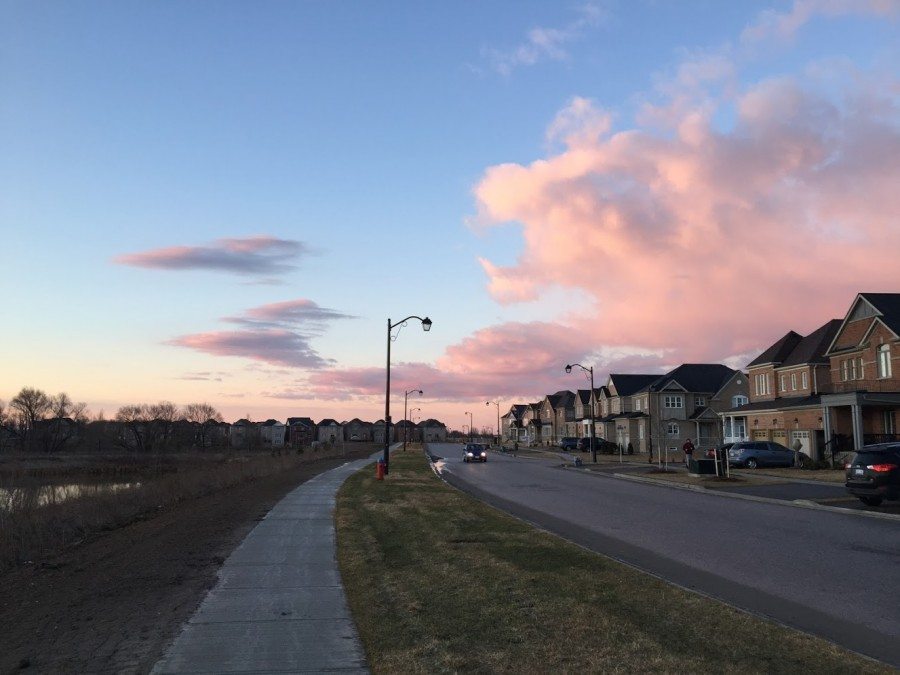The winter term at school has been a crazy one. Between teaching, grading, reports, coaching, and all of the other things that tend to accumulate as the year goes on, I was literally counting the seconds until my March Break began. And no, I was not headed off to some warm, exotic destination to sip piña coladas on a beach. Nope, I was staying close to home with my pooches, catching up on some much-needed sleep, and tackling some long-overdue projects at home. One item on my massive To Do list is to write a blog post and to reflect on my action plan so far. Another is to complete Level 2 of the Google Educator program. And this is what brings me here now.

I’ve spent the past couple of mornings working through the Google Educator Level 2 lessons. My boyfriend thinks I’m crazy for spending my days off doing “school work”, but I love learning new things, and it’s a bonus if the things I’m learning can help me to improve my teaching practice or my efficiency in my work life. I truly hope that my desire to continue learning every day will also inspire my students (or even just one of them!) to recognize the importance of being a lifelong learner, and to realize that learning for its own sake– and not for getting “A’s”– is the key to loving the process.
I highly recommend the Google Certified Educator program to anyone who wants to improve their practice. Level 1 I found quite simple, but even though I was already a fairly accomplished user of GAFE (Google Apps for Education) tools, I certainly learned a few new things. The program is consistently focused not just on learning how to use tools effectively, but how to use them in order to improve your pedagogy and your efficiency. The lessons underline the collaborative and interactive possibilities with many of the tools, and they recognize the importance of helping educators stay organized and on top of their grading and feedback cycles.
Here are a few of the key ideas that I’ve gleaned from the Level 2 training:
Add-ons for Google Docs, Sheets, and Forms:
- Thanks to the genius of Leslie McBeth’s GAFE summit presentations, I’d already been introduced to the world of Add-ons and how they can make the feedback cycle more authentic, timely, and efficient. I’ve been using DocAppender (a Forms add-on) in my class this year, and every student has a Doc that contains all of their feedback, from general observations to test scores, from peer assessments to full rubrics. It changed my life and allowed me to give FAR more feedback than I’d ever been able to provide to students, and it keeps it all in one place for students.
- There are so many more add-ons available than I’ll ever be able to master. But I’ve explored a few of them, and here are some of my favourites: autoCrat (for making custom Docs or PDFs out of form responses), Flubaroo (for auto-grading quizzes), Yet Another Mail Merge (for creating custom replies for technology booking requests sent to the library), Form Notifications (for getting notified every time a form is submitted), and FormPublisher (similar to autoCrat). Staying on top of the add-ons and extensions available and how to use them could be a full-time job, but I’m keeping it as a priority for my professional development time, as they’ve probably made the biggest difference in my teaching, assessment, and workflow than any other tool I’ve encountered.
The endless possibilities for personalizing learning (a huge component of my action plan) through Google tools:
- Docs: creating interactive documents for guiding students on a personalized learning journey; using Tables of Contents, Bookmarks, and internal and external hyperlinks to help students navigate the Doc.
- Forms: self-assessment, peer-assessment, and teacher-assessment forms; using forms for quick understanding checks (autograded using Flubaroo); using “choose your own adventure” features on Forms to help ensure understanding; using Forms to auto-fill and customize rubrics using Form Publisher or autoCrat add-ons.
- YouTube: using annotations and cards to make my flipped lesson videos more interactive and useful for all learners.
- Sites & Blogs: using Sites and/or blogs to create digital portfolios for students to display, reflect on, and share their learning journey throughout the year.
The continuous learning that I need to engage in:
The lessons on using Google Sheets for data analysis were way above my level of comprehension. Although they linked to pages with explanations, even those were too complex for my non-mathematical brain to understand. I’ve added a course on using Google Sheets to my lynda.com playlist so that I can continue to learn and challenge myself to understand the tool more thoroughly and leverage it more effectively for my data tracking.

In all, working through this training has reminded me once again of the importance of staying current with technology to ensure that a) I’m providing my students with the best and most personalized learning experience possible, b) I’m giving effective and timely feedback, and c) I’m modeling the value of self-directed and passion-based learning. There are SO many amazing tools available to us, and taking the time to learn about them, practice them, and try them out in my practice is so fun and rewarding.
And reading Leslie’s recent blog posts about her experiences with the Google Certified Innovator program have helped me to set my next goals for my own professional development! Happy March Break, everyone! I hope you’re finding it restful and re-energizing – I know that I am!
Hi Jennifer, thanks for your blog post! I found your blog connected very well to what I’m currently experiencing at my school. Thank you for describing the Google certified educator program, and congrats on your level 1 achievement. Keep up the great work!
Wow! I’m so impressed. Level II is quite an accomplishment. Thanks for inspiring others to follow in your footsteps!
Well, not so fast! I’m not finished yet. Still a few lessons to go before the exam, but as long as there aren’t too many Google Sheets activities on the exam, I think I’ll be okay! 🙂
Wow, what a great summary of how you are using new tools to dramatically affect student’s learning in your classroom.
I’m so glad that you’ve found the Google Certification process to be a learning experience. I am sure that you’re going to rock the Level II exam (and learn about pivot tables along the way – that was a tough one for me).
Next steps for you? First, you should present about what you’ve learned and how your using these tools at an upcoming GAFE Summit. There’s one in London in May that is still accepting proposals for presentations – you’d be great! Second, you should apply for the Google Innovators program in the next round!
Thanks for the shoutouts too 🙂 I look forward to catching up in April!
Les
Ugh – pivot tables! I know you’re not allowed to say but maybe just wink twice if I really need to figure those out before the exam? 😉
Oh goodness, it is a dream of mine to present at a GAFE summit! How do you even go about submitting a proposal?
Great post! I love that you added a little bit of a personal touch to it. It feels like I know you a little bit better now. Lynda.com is the best isn’t it? you should check out the David Allen course “Getting Things Done”, my action plan was inspired by it.
Keep Posting!
Thanks for the comment, Ryan! So funny that you mention GTD – I have actually just been reading about that and just this morning reached Inbox Zero!
How much time did you spend on the Level 1 training, and how much time have you / will you spend on Level 2? I hear they are quite time-intensive, but I’m also glad to hear that you find them worth the investment. Lots of people hate spreadsheets – maybe we can chat data analysis at our next F2F?!
It’s hard to say exactly, Ruth! For level 1, I did it mostly in one sitting, though I have an ability to pass hours without realizing when I’m in a flow state! But for level 1 I already felt comfortable with most of the material. Level 2 I began the Monday of March Break, and spent about 2 hours each morning on it, for a week. The lessons didn’t take me nearly as long as they estimate. For the exam, they give you 3 hours and it took me about half that. But the time was certainly worthwhile!
Thank so much for sharing, Jen!!
This is all such great information and strong suggestions for personalization in the class which is something I think everyone can use and need.
I feel like there is a misconception that Google Ed Apps take so much time to use but honestly, once you learn it is time that is saved in the end!
Thanks for taking the time to comment, Andrea – I really appreciate it!
I agree; I think some teachers in our school are so tired of being told that they need to learn this new thing now, and some can be resistant to that. I wish everybody knew how valuable these tools can be for their teaching!